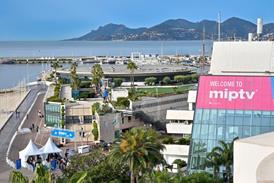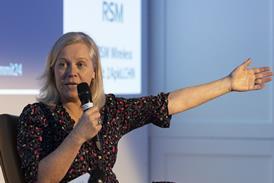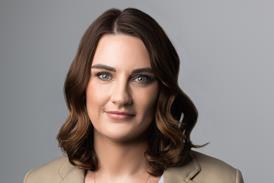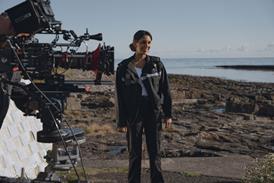European broadcasters are adopting a localised approach and embracing formats such as video on demand, HD and 3D to improve their offerings.
If anything can illustrate the future of the TV channel business in Europe, it is how channels such as Canal Cocina in Spain and Film 1 and Sport 1 in the Netherlands are expanding their audience reach beyond the cable and satellite platforms to the world of on-demand and the iPhone.
Canal Cocina’s iPhone app has achieved 340,000 downloads from both inside and outside Spain since launching in September 2009 and is among the top three apps in the Spanish iPhone app store. Meanwhile, Film 1’s iPhone app, within days of its launch in August, reached number one in the Dutch iTunes store and has been downloaded on 10% of all Dutch iPhones (almost 50,000 times). Chellomedia is also developing an interactive magazine for the iPad and other tablets for launch in early 2011.
Niall Curran, chief operating officer of Chellomedia, which owns all three of these channels, says: “Over the past five years, we have been moving from a traditional media organisation and rethinking the approach to the product and how production will work in very different formats. “If you get it right, it’s a real value-add for your customers and also your cable and satellite partners.”
The future, according to Curran, is a trend towards a more sophisticated approach. Whereas 10 years ago broadcasters could expect subscriber growth from “just showing up” with a channel and some sub-brands to improve their shelf space on various distribution platforms, nowadays that approach has marginal effect. “Gone are the days of trying to have a non-localised approach,” agrees Tom Davidson, managing director of AETN UK, the operator of the History and Crime & Investigation channels, among others. “The bar is now set to how quickly you will localise and how local you will go.”
AETN, which runs seven UK channels including three HD simulcasts, moved into continental Europe four years ago with one pan-European signal, but now has language versions in all its markets and will start commissioning local productions outside of the UK by the end of the year because local production gives a “local flavour” that can help attract local audiences. “We are constantly looking for content that resonates with audiences and series-style content like Pawn Stars on History is the direction we are heading,” says Davidson “Once you get something that audiences like, you supply more of it.”
The pressure for both channel providers and operators in an environment where competition for consumers’ media time is growing has been intense.
While channel operators believe high quality linear channels still have a central role, there is also a focus on creating added-value services for platform operators, be it with catch-up TV video on-demand (VoD) services, HD simulcasts or other innovations such as 3D.
“No one has limitless bandwidth, no matter how whizzy their technology infrastructure,” says Curran. “In an environment where operators can allocate bandwidth to on-demand or higher-speed broadband, or to any number of things that need to go up and down the pipe, you’ve really got to make sure your channel propositions are punching above their weight.”
Expanding revenue sources
While the traditional business model of pay-TV channels – fees from platform operators and advertising – is strong, revenue sources are expanding to include VoD and more sophisticated advertising.
“As digital penetration increases, ad revenue streams, and especially tailor made, 360-degree, cross-platform ad solutions, including ad-funded programming, sponsorship, online and mobile, will become increasingly important,” says Bradley Wald, manager of EMEA for Comcast International Media Group, owner of E! and The Style Network.
One key to building the proper channel offer that includes localisation, VoD, HD and a path to 3D is to have the right technology in place. “The past 10 years has seen a revolution in how your content got to the play-out centre and then how it got to the customer. It is now possible to get your content without the cost of making, shipping and storing tapes.” says Greg Moyer, president of Scripps Networks International, which operates Food Network and Fine Living Network, and uses Chello DMC to play out its European channels. He adds: “We are also looking at the ability to limit the number of play-out centres by using remote playout technology that Chello DMC is now testing.
What is important is that they are technologically forward-thinking without being on the bleeding edge, where technology crashes.”
Davidson surmises that channel providers need to be forward-thinking about technologies like 3D and try to remain relevant. “Things such as 3D, which we know the operators are investing in, we want to be investing in as well, so there is a match between the delivery of the technology and the delivery of the content,” says Davidson.
In the summer, AETN trialled 3D with BSkyB in the UK and is now part of the pay-TV operator’s 3D channel. “When platforms are choosing between competitors, this really comes into play,” Davidson says. “They want to know who is going to help us drive the business, and we want to be on the shortlist.”
CASE STUDY
VIDEO ON DEMAND
Bruce Tuchman
President of MGM Worldwide Channels
For MGM Studios, video on demand (VoD) has been a serious part of the global business for years. However, the studio is looking at subscription VoD (SVoD) as a “big opportunity” as a companion service for pay-TV operators who take the MGM linear channels.
“Transactional VoD has been proven but SVoD is not as well established and I have been surprised – in a good way – with the consistency of hits we are getting,” says Tuchman. “We are very encouraged that there is really a business in SVoD.” MGM’s 4,000-plus films are the perfect fit for SVoD services that are companions to the 24 different linear MGM channels around the world.
“You have to be where the customers are and they don’t just want the linear TV channel. They also want the convenience of on-demand applications,” says Tuchman.
In Europe, MGM’s VoD services in Flanders, the Netherlands and, most recently, Slovenia have been enhanced by working with digital media facility Chello DMC. “You can talk about technical and business matters to Chello DMC because they share capacities and mindsets about the strategy of the overall business that make it a good fit,” says Tuchman.
MGM is looking at launching more SVoD services. “VoD is key to our strategy because the industry is converging. There is an artistry and a wanting to be surprised that puts the onus on us to be better curators and editors of what we are creating. The new technologies don’t end anything; they stay around and they spread the wealth.”
CASE STUDY
FOX/NAT GEO
Julio Sobral
Senior vice-president of operations, Fox International Channels Europe
National Geographic launched its first channels in Europe 12 years ago, starting with BSkyB in the UK, while Fox International launched its first European channel in Spain in 2001. Today, Nat Geo counts 55 European channels (including local-language versions). Fox has 35 channels in European countries and reaches as far as Israel, Russia and Turkey.
For Nat Geo Europe, which is 20% owned by BSkyB, growing the channel base was first about adding local language audio. It then began to launch sub-brands such as Nat Geo Wild, Nat Geo Adventure and Nat Geo Music. Most recently, the company added HD to its Nat Geo channel and Nat Geo Wild HD, each with multiple-language and subtitled versions.
“We are reviewing the entire distribution business, and operationally it makes sense to localise further and start adding local advertising and promotions,” says Sobral.
Plans are in place to launch another four HD versions of Nat Geo Wild by June 2011. Fox also runs multiple channels across Europe including its eponymous Fox channel, FX, Fox Movies, Fox Life, Fox Crime, Fox News, Fox Sports and Fox Retro, which is in the top 10 channels in Italy after only one year.
“It is more difficult to do pan-regional feeds with entertainment channels because programming rights are sold country by country,” Sobral says. “In 95% of the cases, we have had to launch country-specific feeds.”
The Fox channels are also going HD in several markets, led by Fox, Fox Crime and Fox Life. Together, Fox and Nat Geo run 90 TV feeds across Europe, including a couple of “monster feeds” with up to 16 languages bundled into one pan-regional signal.

























No comments yet